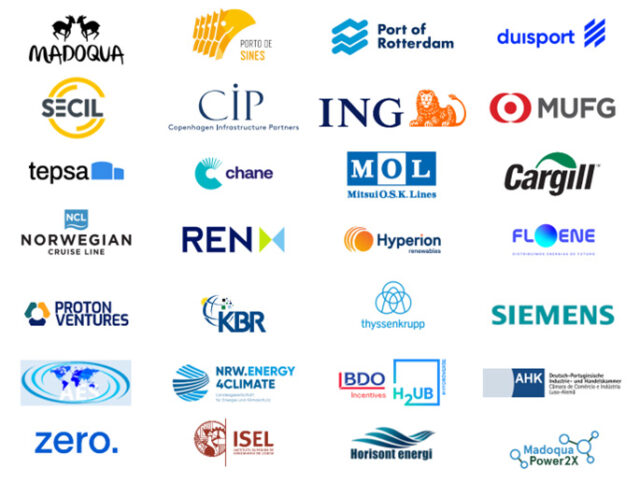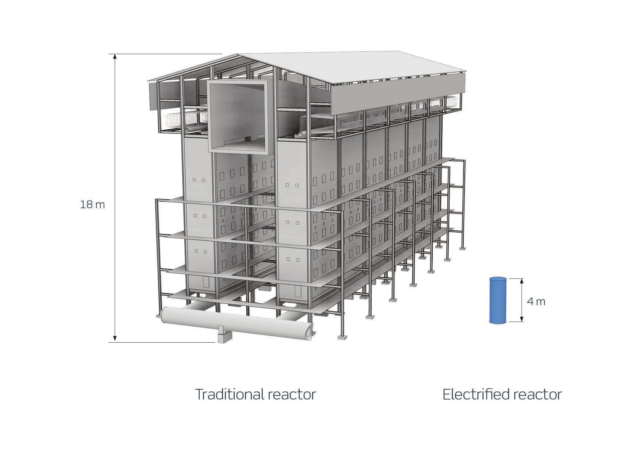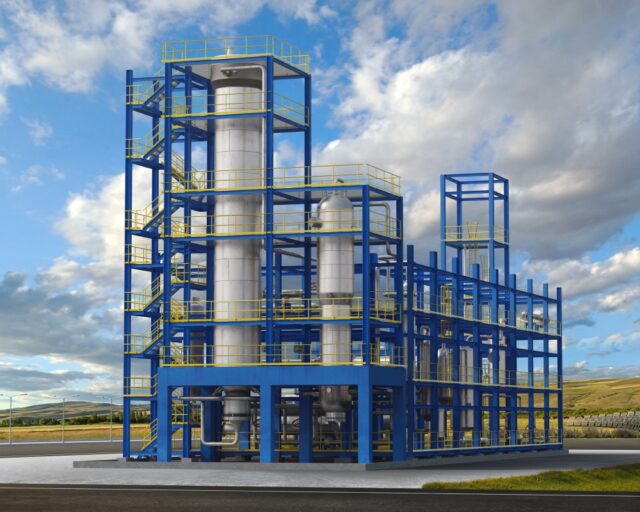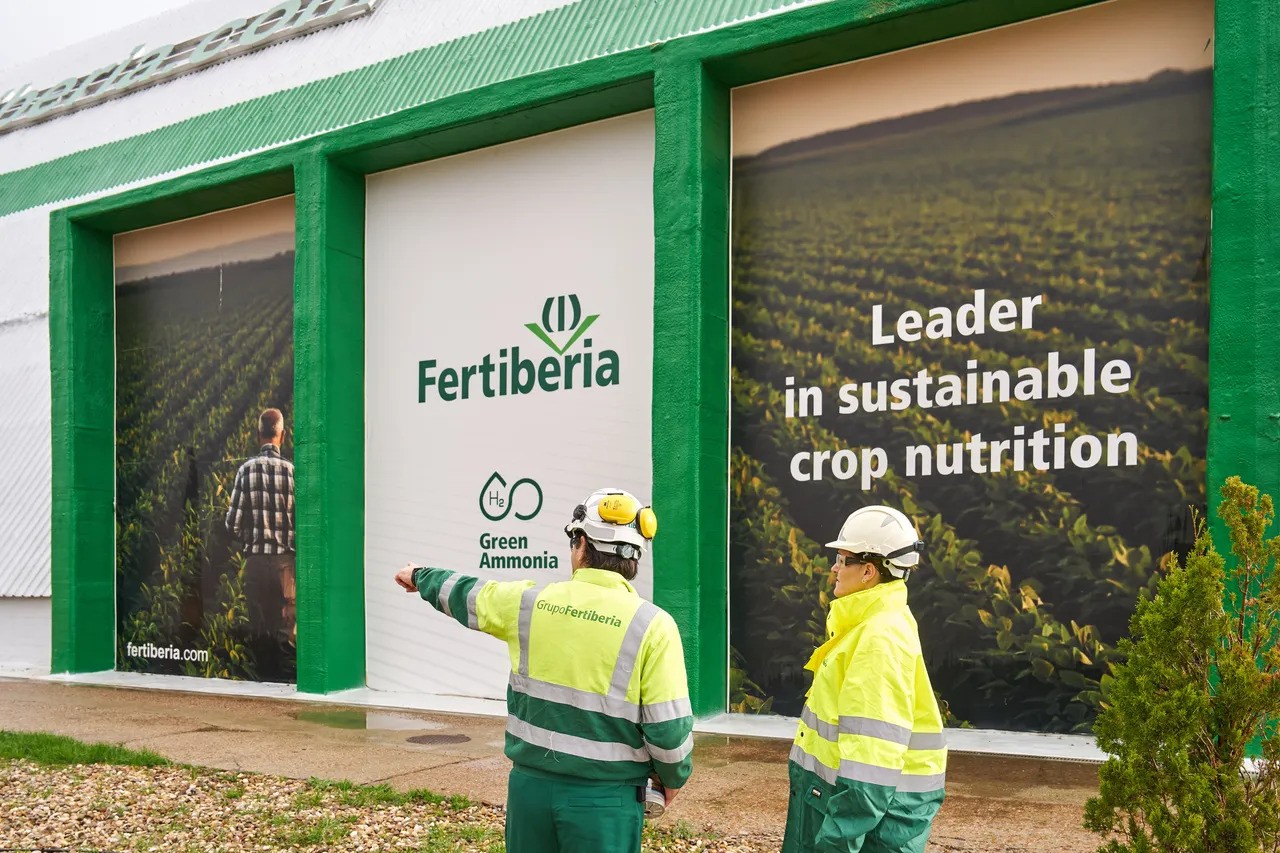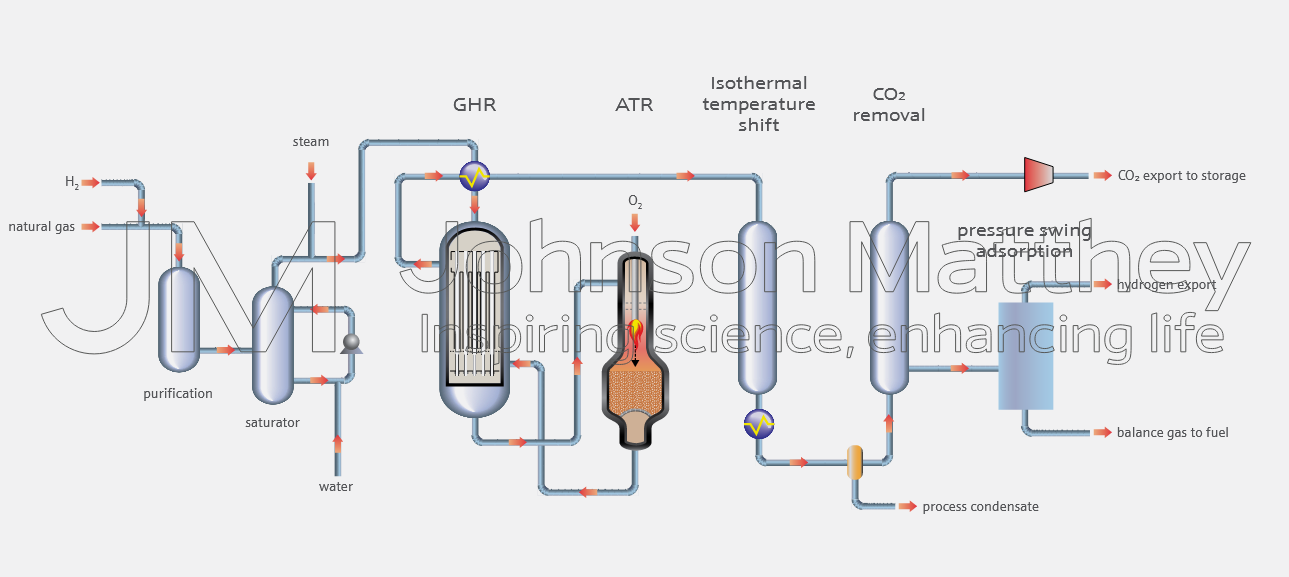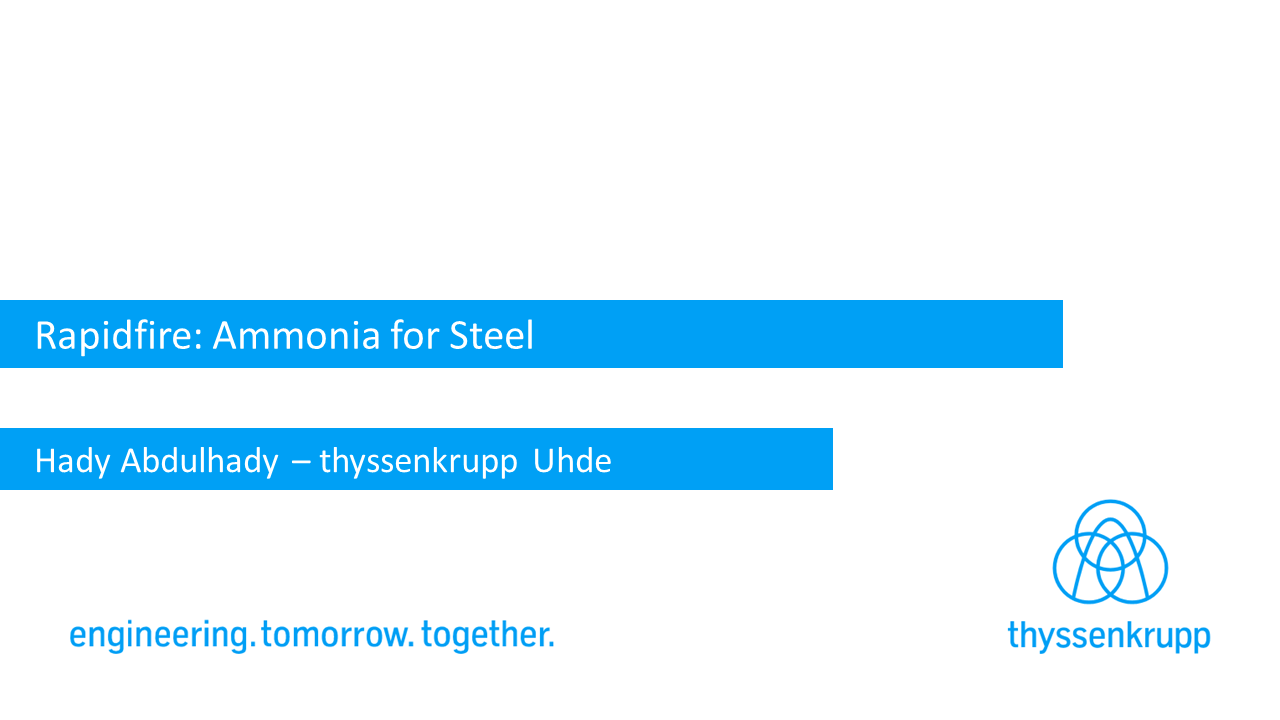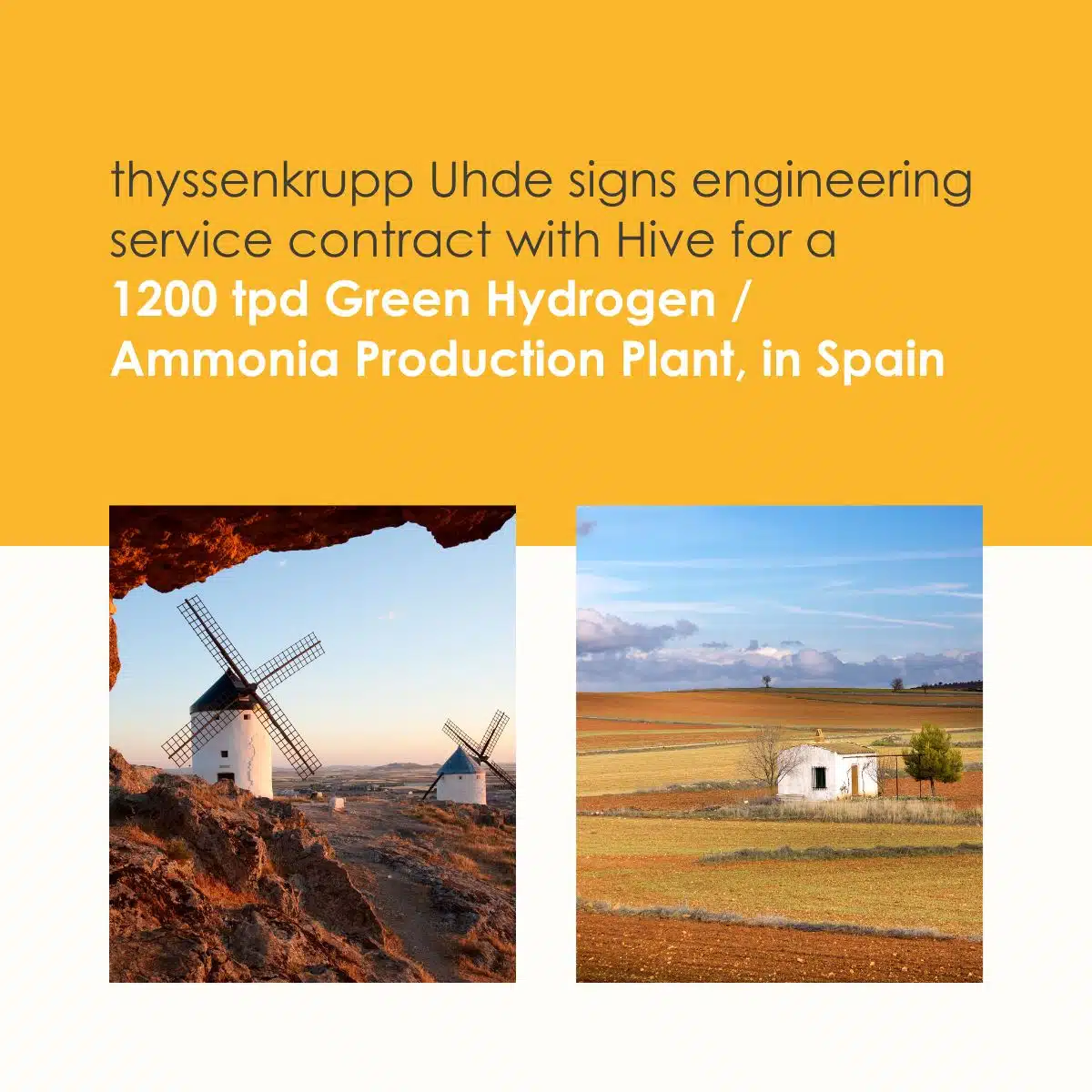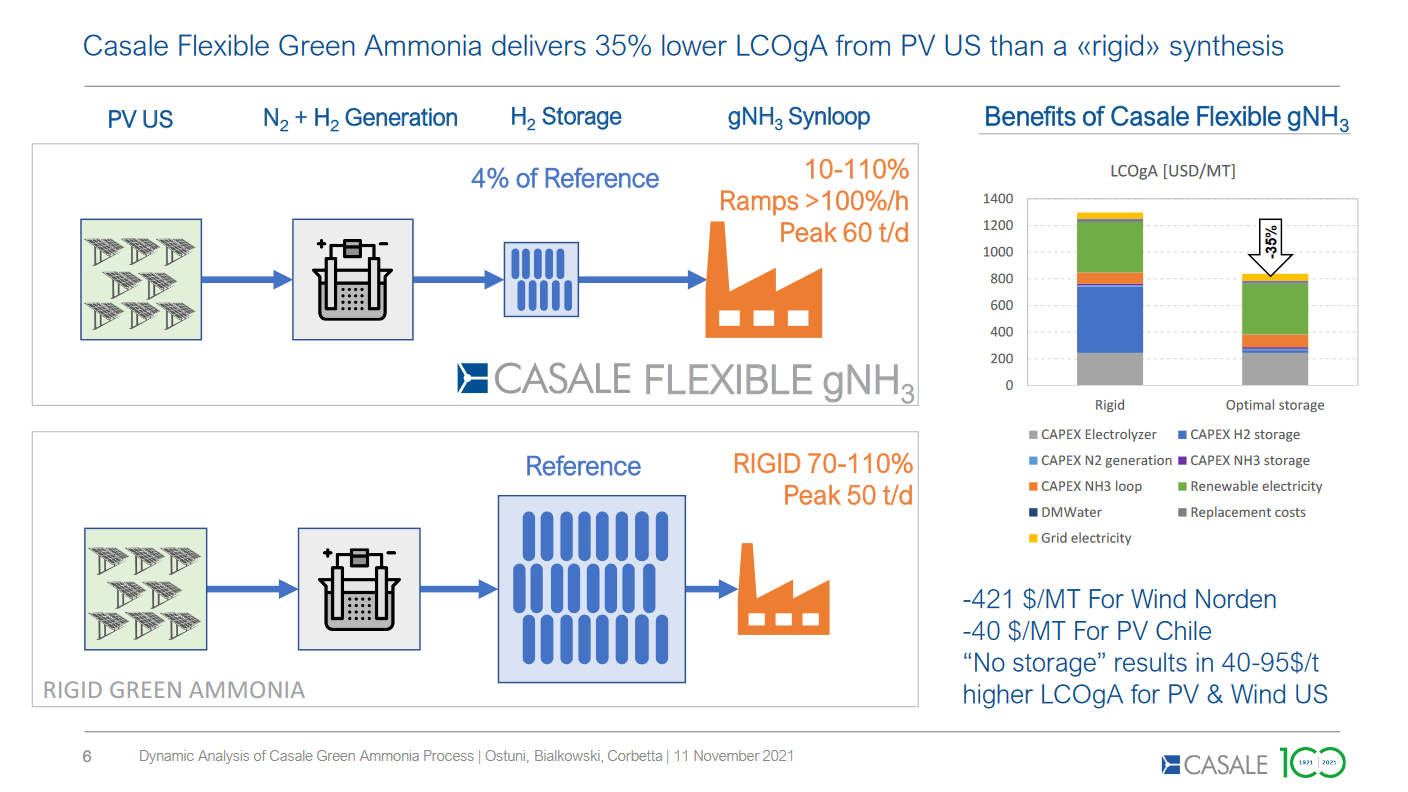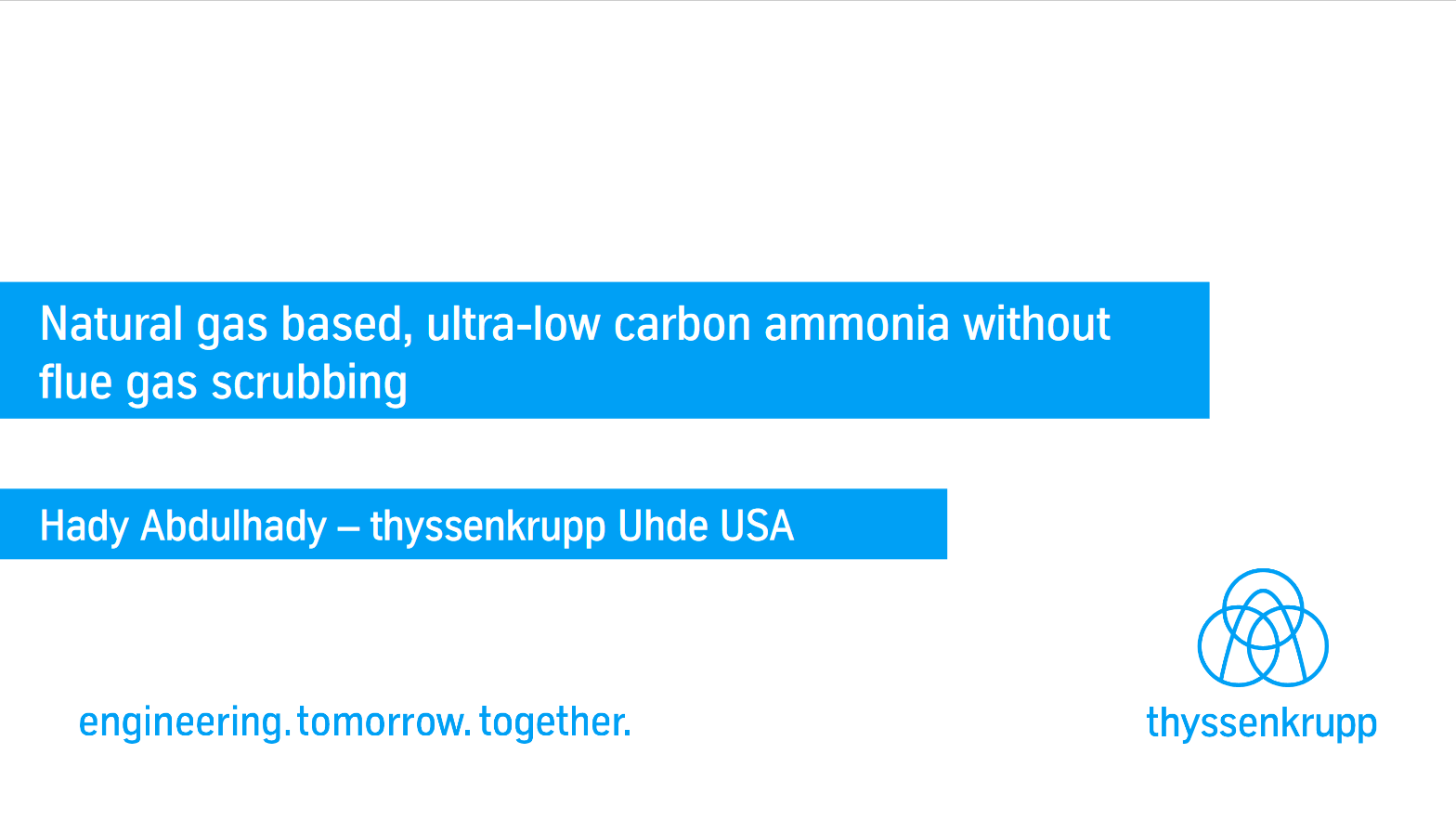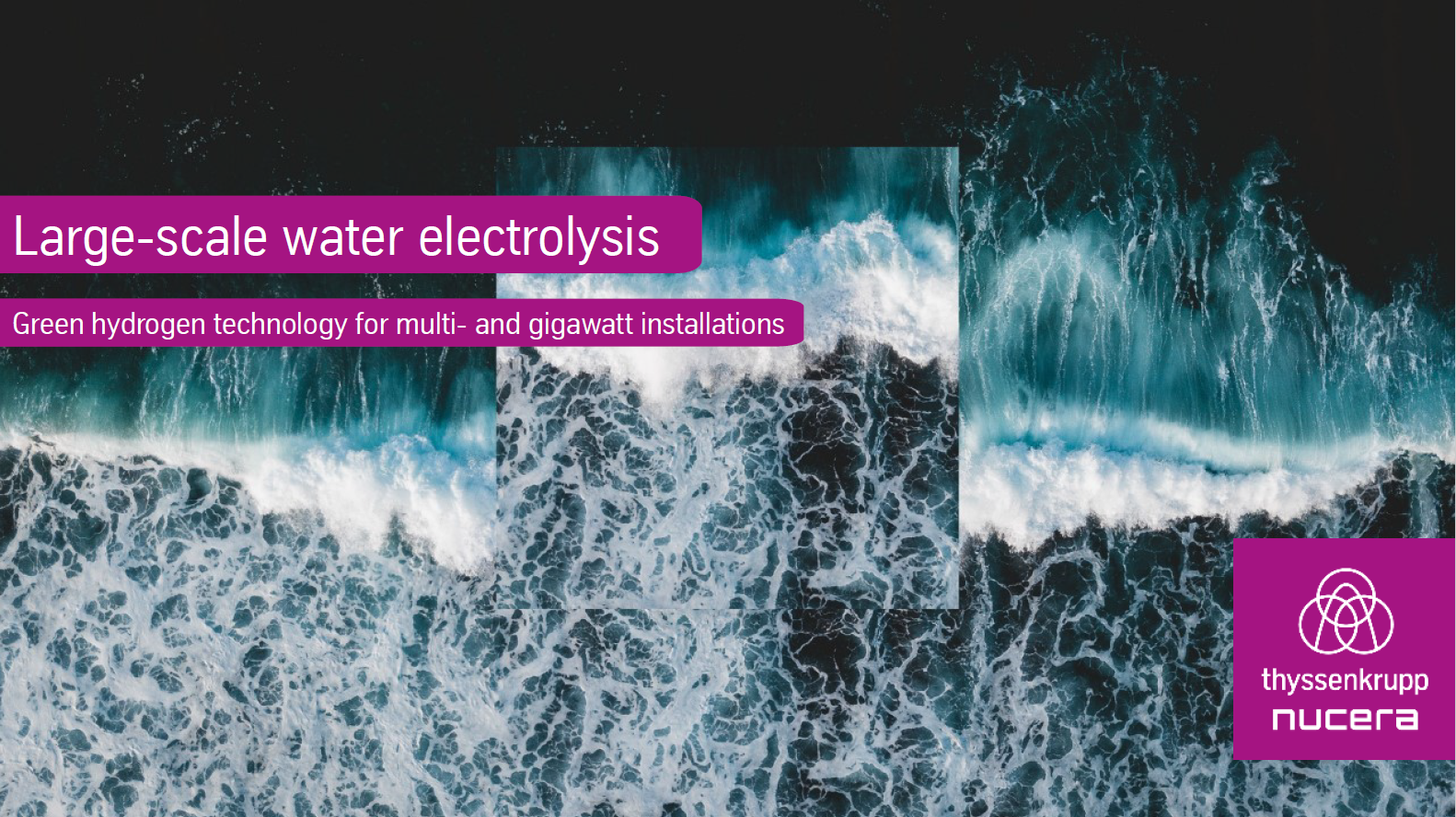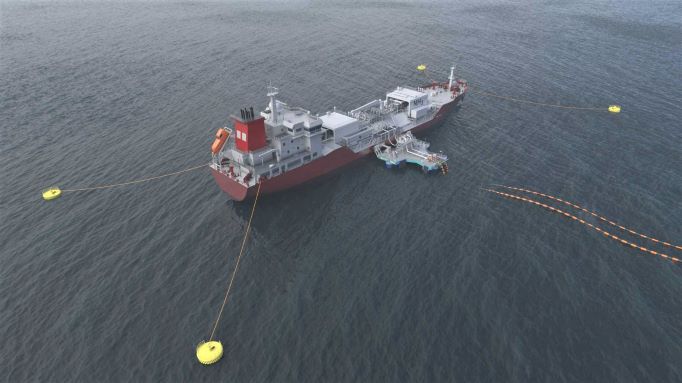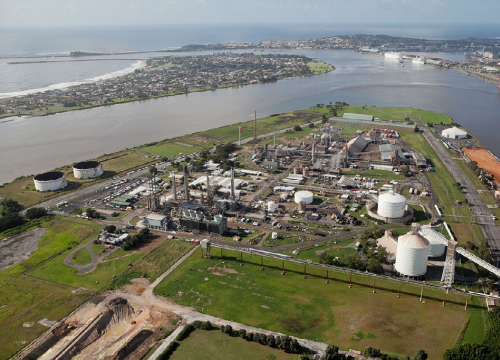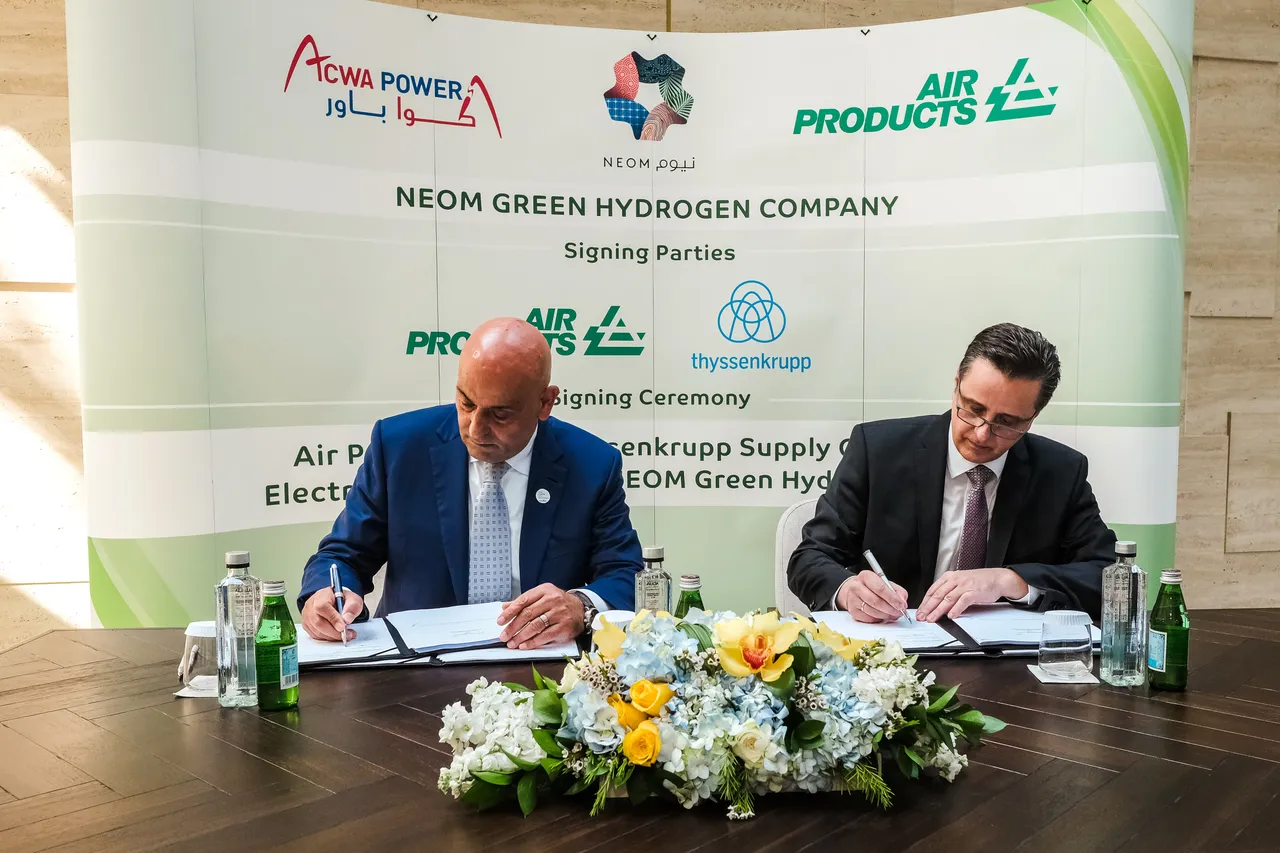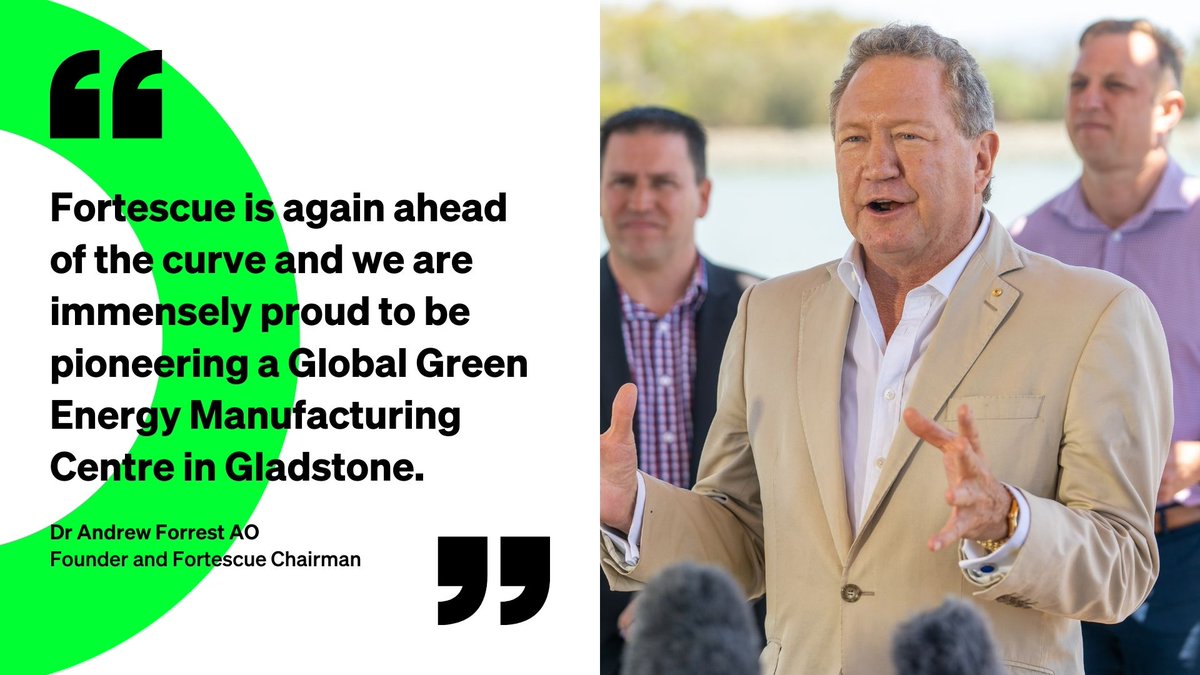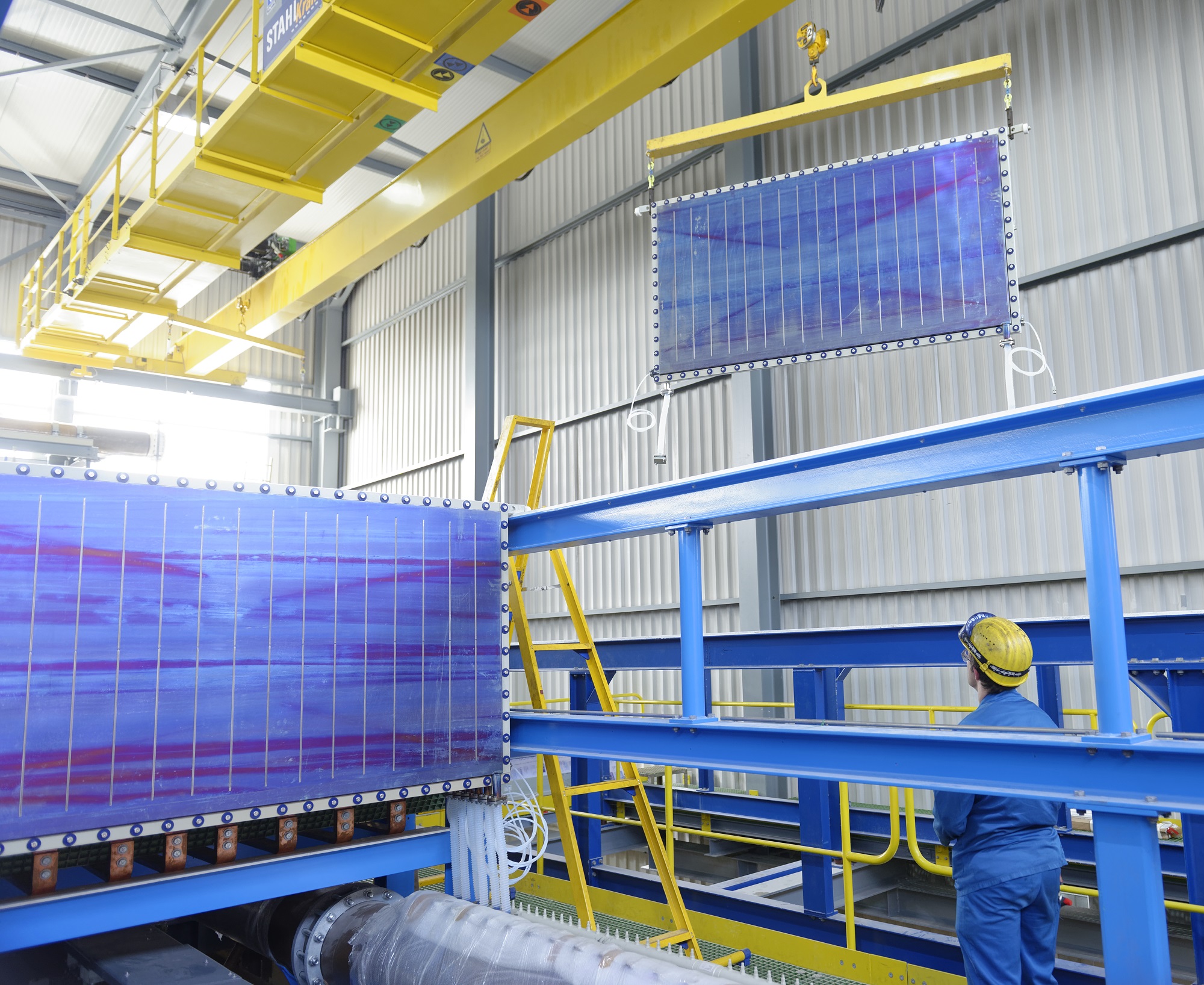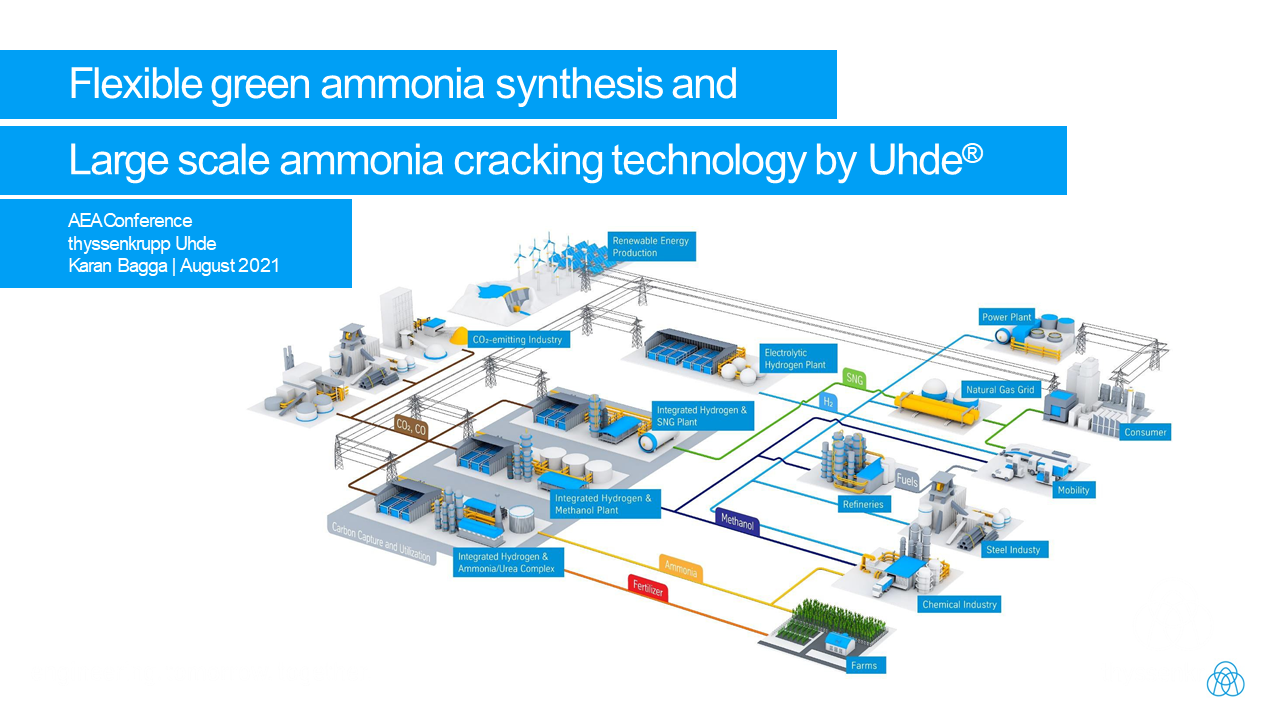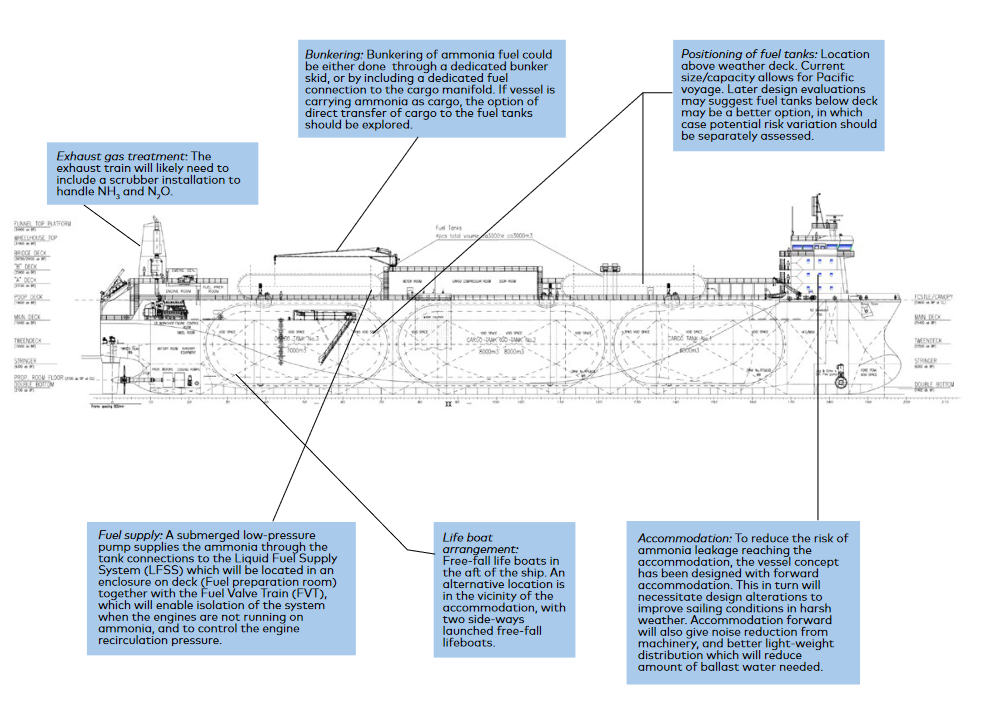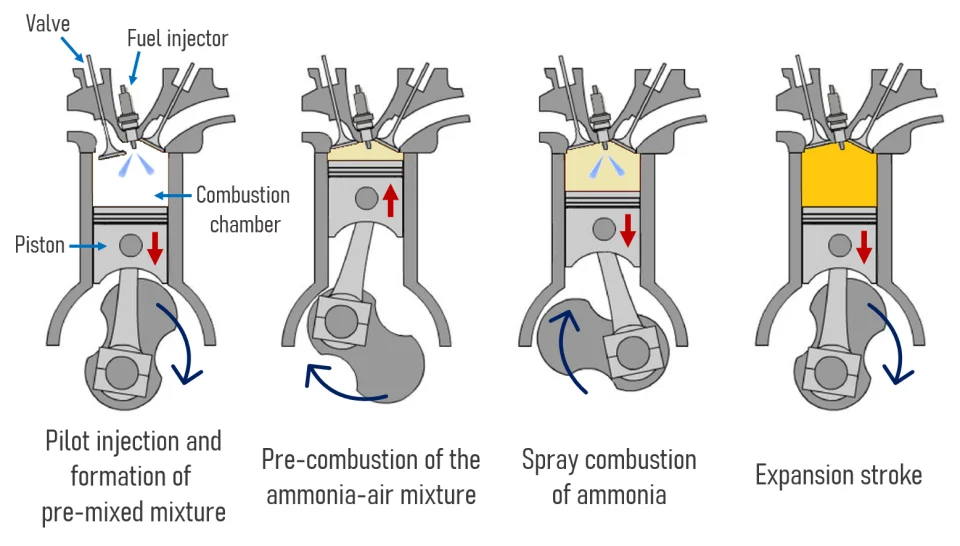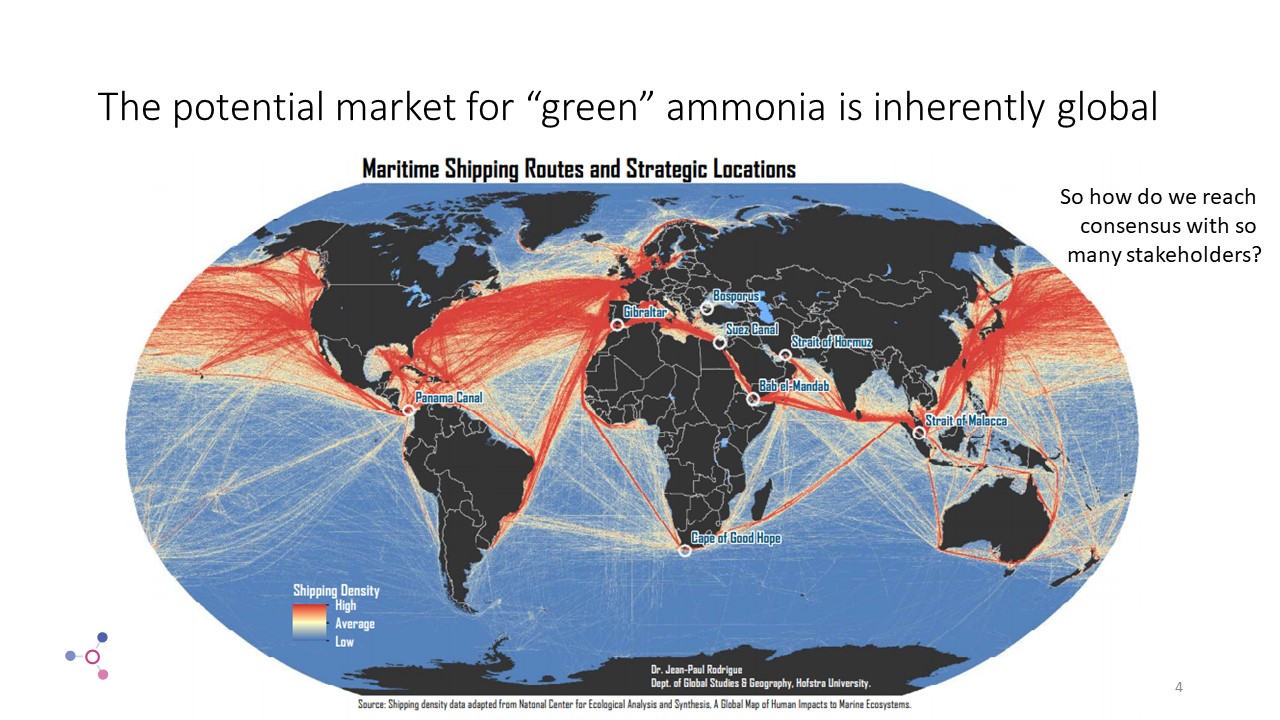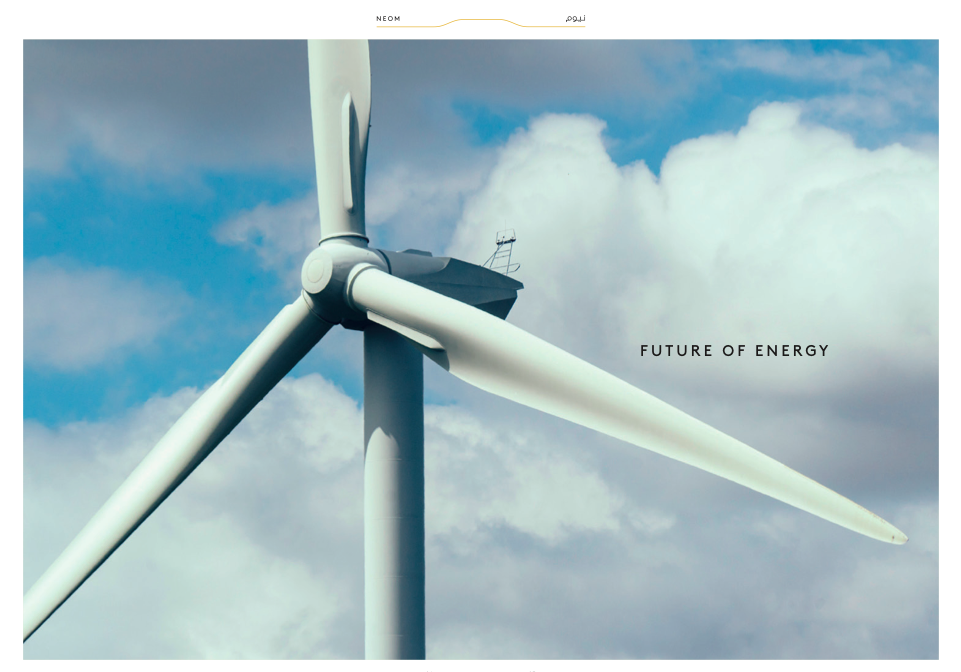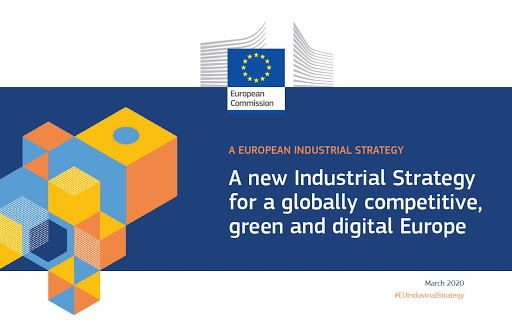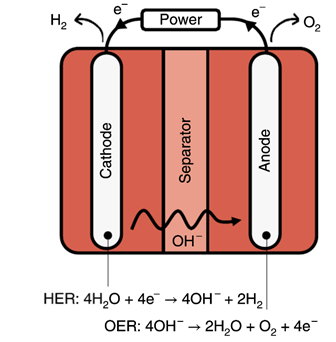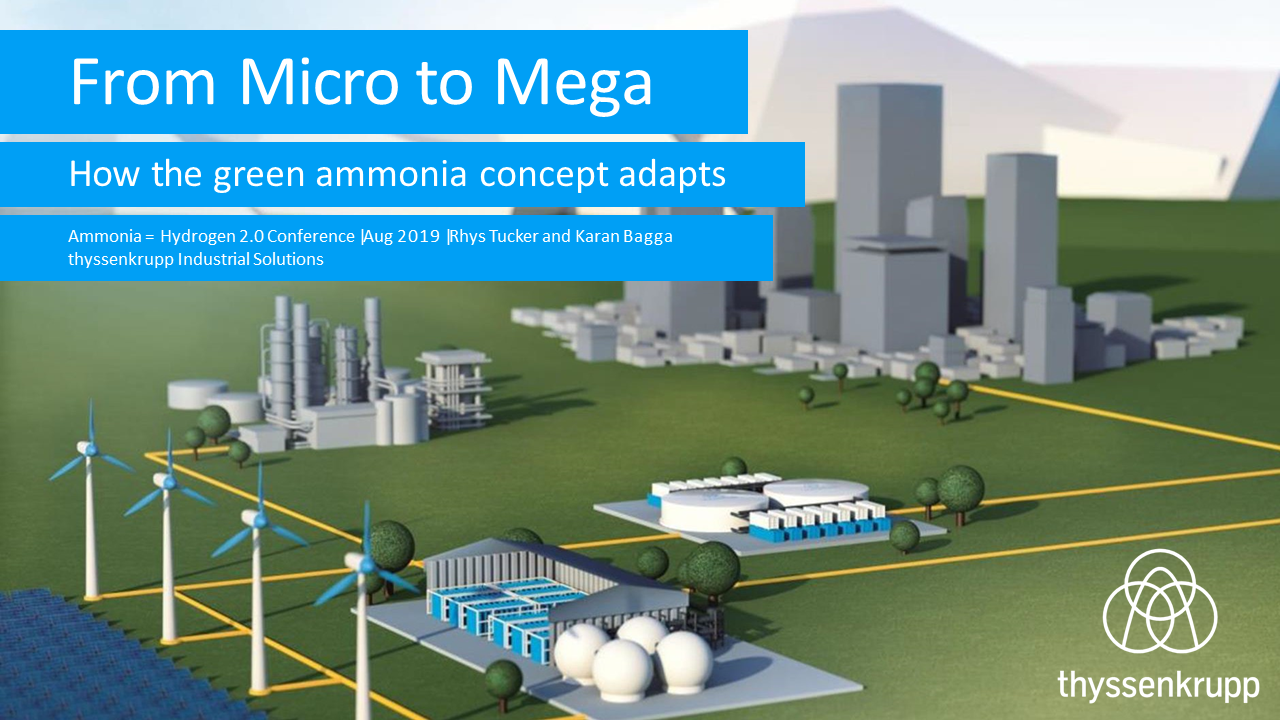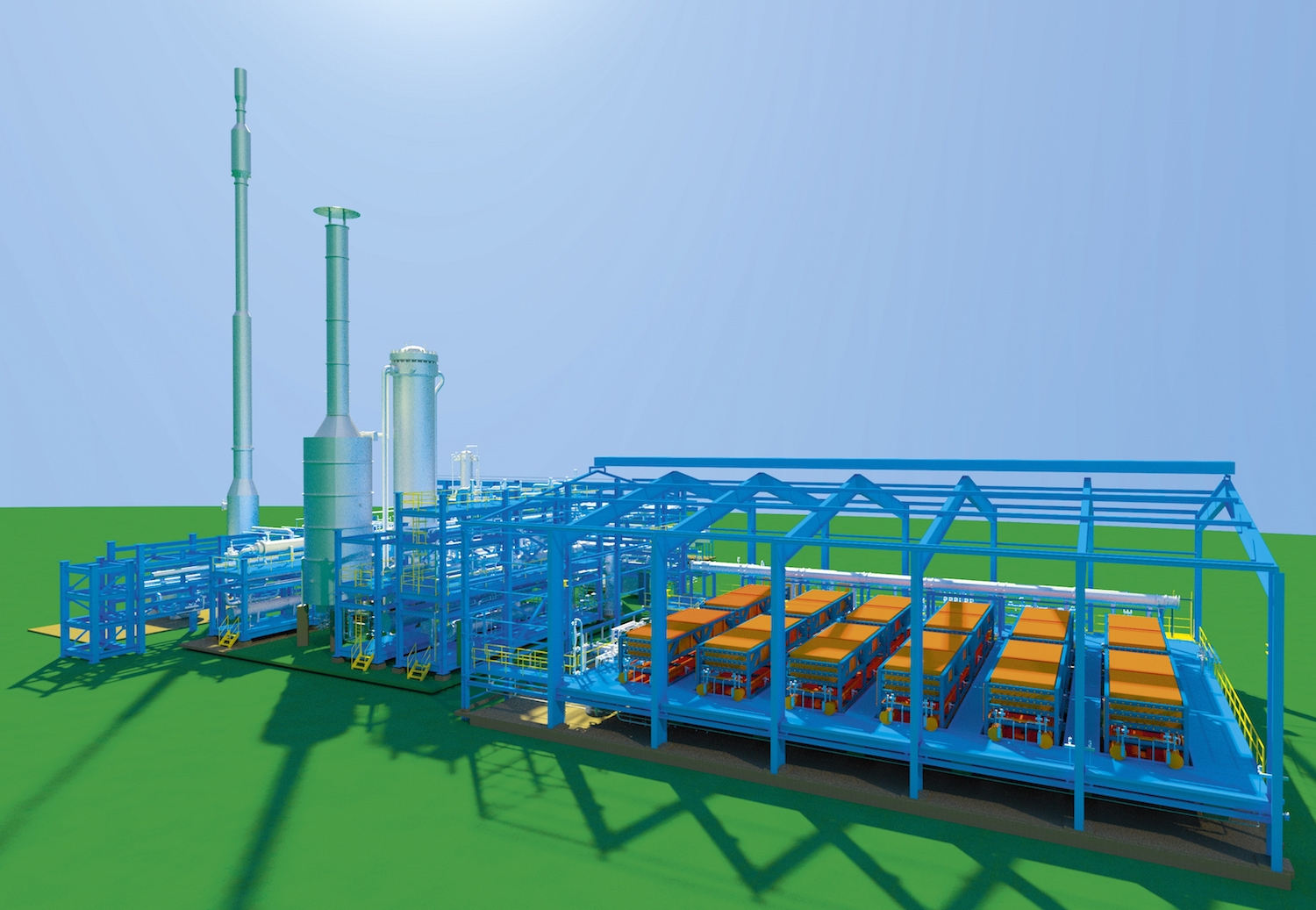thyssenkrupp Uhde will supply technology for decarbonising three existing ammonia & urea plants operated by Misr Fertilizers Production Company (MOPCO) on the Nile Delta. This includes electrolysis capacity to feed the production of 150,000 tons per year of renewable ammonia, with Yara Clean Ammonia already committed as offtaker.
Content Related to thyssenkrupp Uhde
New green maritime corridor to link Portugal with northern Europe
Madoqua and Mitsui O.S.K. Lines will lead development of the corridor. Industry partners in the consortium include financiers, terminal operators, Port authorities, alternative fuel producers and offtakers. The transportation of liquified CO2 along the corridor will help establish a supply chain for sequestration of carbon emissions in Norway at Horisont Energi’s Gismarvik CO2 hub.
Technology options for low-emission ammonia production from gas
In this Technology Insights article, we explore the different technology options for low-emission ammonia production from gas feedstock. What are the different energy, carbon capture, scale and maturity trade-offs that need to be considered? What technology choices are project developers currently making?
Licensor selection picking up for renewable ammonia synthesis loops
One of the key steps in project development is the selection of the licensor for the renewable ammonia synthesis loop. For renewable ammonia projects, licensors including KBR, Topsoe, Thyssenkrupp Uhde, Casale, and Stamicarbon offer a range of technologies and services covering small to large-scale ammonia production. We explore these different technology offerings, as well as the growing list of projects where they are being deployed.
thyssenkrupp to continue decarbonisation push at Puertollano
thyssenkrupp Uhde will lead concept development of a 50 MW electrolysis facility adjacent to Fertiberia’s Puertollano plant. Together with Nel and Iberdrola’s existing 20 MW electrolysis facility operating nearby, enough electrolytic hydrogen feedstock will be produced to decarbonise 40% of Puertollano’s site emissions.
Johnson Matthey and thyssenkrupp: CCS-based ammonia technology to market
Two big players, Johnson Matthey and thyssenkrupp Uhde, will combine their CCS-based hydrogen and ammonia synthesis technologies to offer a new “blue” ammonia solution, enabling production with up to 99% CO2 capture.
Hy Stor & Nel: electrolyser supply for Mississippi-based renewable hydrogen
Nel will supply over 1 GW of alkaline electrolysers for Hy Stor Energy’s hydrogen production and storage hub project in Mississippi, USA. In other electrolyser news, Cepsa and Allied Green Ammonia have picked technology providers for their under-development projects in Spain and Australia.
thyssenkrupp Uhde & Hive Energy: renewable ammonia in Spain
thyssenkrupp Uhde will deliver the pre-FEED stage of Hive Energy’s ALBAMED I project to be located in Albacete, Spain. The project’s first phase is expected to produce over 1 million tonnes of renewable ammonia by 2030.
Japan consortium to explore ammonia imports to Osaka
Mitsui & Co., Mitsui Chemicals, IHI Corporation and the Kansai Electric Power Company will explore the establishment of a hydrogen & ammonia supply chain based in Osaka. Ammonia fuel will be used to decarbonise electricity generation, and cracked to provide a feedstock for other industrial processes like steel-making. In South Korea, a similar partnership is evolving between LOTTE and Air Liquide. You can learn more about the emerging nexus between ammonia cracking and steel-making at our upcoming annual conference in Atlanta, USA.
Scene-setting for ammonia in the marine industry: propulsion systems, FPSOs & jettyless tech
As the maritime industry gears towards the use of more sustainable fuels, Denmark-based cargo pump supplier Svanehoj reports increased orders for ammonia-capable equipment to be used on LPG tankers. Navantia and H2SITE will combine their expertise in shipbuilding and ammonia cracking to create hydrogen-based propulsion systems. Thyssenkrupp Uhde’s ammonia technology will be used in SwitcH2’s floating ammonia production vessels to harness offshore wind energy. And Iverson eFuels will use ECOnnects’ jettyless gas transfer technology at its 200,000 tonnes per year ammonia production facility in Norway.
Technology status: alkaline electrolysis for renewable ammonia production
Alkaline electrolyzers will play a significant role in renewable ammonia production going forward. Historical developments in electrocatalysts and optimized stack design have already addressed some of the key bottlenecks in the technology, and new developments will enable flexible operations at higher pressures.
Flexible ammonia synthesis: shifting the narrative around hydrogen storage
Flexible ammonia production technology is currently scaling up to meet the challenges of fluctuating electricity feedstock. The ability to ramp down plants to 5 - 10% of their nominal load will minimize the requirement for hydrogen storage buffers and reduce the overall cost of renewable ammonia production. The first demonstration-sized flexible ammonia plants are due to begin operations later this year.
New ammonia import infrastructure under development across Europe (and beyond)
New import terminals, energy hubs, bunker facilities & upgrades to existing ammonia storage facilities are underway across Europe. This week, we explore new project announcements in Wilhelmshaven, Brunsbüttel, Rotterdam and Immingham. We visit Taiwan for another ammonia import terminal announcement, and look at a new partnership between thyssenkrupp and ADNOC to deploy large-scale cracking - the “last piece of the puzzle” for global ammonia trading.
Production technology updates: from mega-scale to distributed ammonia
Recently, KBR launched its Ammonia 10,000 technology for newbuild ammonia plants, tripling the largest available single train capacity to 10,000 metric tonnes per day. In our latest Technology Insights article, we explore the other pieces of the puzzle required for mega-scale ammonia, as well as some updates from the other end of the spectrum, with three distributed, small-scale ammonia synthesis systems under development in North America.
thyssenkrupp to feature in ammonia mega-projects in USA, Qatar
thyssenkrupp features in two new, million-tonne-per-year ammonia projects. In Louisiana, thyssenkrupp will be the technology provider for Nutrien’s CCS ammonia production plant, while in Qatar they will lead EPCC work on a new, CCS-based production facility due to start operations in 2026.
Natural gas based, ultra-low carbon ammonia without fluegas scrubbing
Brazil’s first electrolysis-based ammonia plant takes shape
Brazil’s largest fertiliser producer Unigel has launched the country’s first industrial-scale electrolytic hydrogen & ammonia project. 60 MW of grid-connected, thyssenkrupp nucera electrolysers will feed the production 60,000 tonnes per year of ammonia. An existing ammonia production plant in Camaçari, Bahia province will provide the foundation for the project, which seeks to leverage the high share of renewable electricity in Brazil’s national grid. In other South American news, Uruguay’s officially-released Green Hydrogen Roadmap sets out ambitious decarbonisation goals. Green ammonia has a role both as an export commodity and for domestic use.
LSB Industries: renewable ammonia in Oklahoma
LSB Industries will partner with thyssenkrupp and Bloom Energy to develop renewable ammonia production at its existing facility in Pryor, Oklahoma. 30 MW of electrolysers will feed the production of 30,000 tonnes of renewable ammonia per year, with two electrolyser technologies (solid-oxide and alkaline) working side-by-side.
Renewable ammonia in Vietnam
Vietnamese renewable energy project developer The Green Solutions will partner with ECONNECT Energy, thyssenkrupp and Black & Veatch to develop a new renewable hydrogen & ammonia production plant in Tra Vinh province, Vietnam.
A few hundred kilometers to the north, Singapore-based Enterprize Energy is developing a significant offshore wind project with both grid generating and Power-to-X elements. The 3.4 GW Thang Long wind farm will produce grid electricity, renewable hydrogen for local markets and renewable ammonia for export.
Green ammonia from Kooragang Island
Orica and Origin Energy will collaborate on feasibility work and development of the Hunter Valley Hydrogen Hub in Newcastle, Australia. A grid-connected, 55 MW electrolyser will produce green hydrogen from recycled water, with hydrogen to be fed into Orica’s existing ammonia production plant on Kooragang Island. Grid-connected hydrogen production facilities in Newcastle stand to gain access to surplus amounts of renewable electricity in the coming years, with huge commercial investment interest in the under-development Hunter-Central Coast Renewable Energy Zone.
thyssenkrupp to install 2-plus GW of electrolysers for NEOM
thyssenkrupp will engineer, procure and fabricate a 2 GW+ electrolysis plant at the NEOM project in Saudi Arabia, based on their 20 MW alkaline water electrolysis module. The plant is scheduled to start production in 2026, with hydrogen from the facility will be used to make ammonia for export to global markets. At the Port of Rotterdam, thyssenkrupp will also take the lead on Shell's 200 MW, ‘Holland Hydrogen I’ project, with hydrogen production scheduled to start in 2024.
Serving the large-scale hydrogen and ammonia market - Expansion to 5 GW of annual electrolyzer manufacturing
Fortescue plans mega electrolyser production plant for Queensland
As part of a new partnership with the Queensland state government, Fortescue Future Industries (FFI) announced plans for the world's largest electrolyser, renewable industry and equipment factory in Gladstone. It's been a big week for electrolyser production announcements, with new, GW-scale production facilities planned for Germany and India.
thyssenkrupp to expand electrolyser production five-fold
thyssenkrupp's annual production output of 1 GW alkaline water electrolysis cells will expand five-fold, thanks to new funding from Germany's Federal Ministry of Education and Research. There is also federal funding for two additional projects: H2Mare (offshore ammonia production), and TransHyDE (ammonia cracking solutions).
thyssenkrupp to provide technology for UAE's first green ammonia plant
As reported at Ammonia Energy in May, Abu Dhabi Ports and Helios Industry are developing the UAE's first renewable ammonia plant. The 200,000 tonnes per year, green ammonia facility in Abu Dhabi will be powered by a 800 MW solar farm, with Helios investing $1 billion in the plant's construction. The project has a new partner, with thyssenkrupp signing an agreement to perform a technical feasibility study on a plant based on thyssenkrupp's electrolysis technology.
The Ammonia Wrap: no major obstacles for NoGAPS success and more
Welcome to the Ammonia Wrap: a summary of all the latest announcements, news items and publications about ammonia energy. This week: latest report from NoGAPS, Viking Energy project takes another step, more collaborations for Yara, thyssenkrupp to invest in cracking R&D, investment in clean hydrogen technology in the USA, world-first visualisation of ammonia combustion in a spark-ignition engine and our numbers of the week.
The Ammonia Wrap: 30 GW Power-to-X project in Mauritania and more
Welcome to the Ammonia Wrap: a summary of all the latest announcements, news items and publications about ammonia energy. This week: a 30 GW Power-to-X project in Mauritania, green hydrogen and ammonia in Egypt, €8 billion for 62 hydrogen projects in Germany, Cummins' electrolyser gigafactory in Spain, Ammonia engine development in Portugal and Shchekinoazot gets a new decarbonisation partner.
The Ammonia Wrap: world's largest ammonia manufacturing complex begins decarbonising, and a welcome boost for EU fertiliser producers
Welcome to the Ammonia Wrap: a summary of all the latest announcements, news items and publications about ammonia energy. This week: the world's largest ammonia manufacturing complex begins decarbonising, a call for green hydrogen projects in Chile, new maritime decarbonisation forecast from MAN ES, decarbonised shipping at the Biden climate summit and Fertilizers Europe welcomes the new Carbon Border Adjustment Mechanism.
Certification of low-carbon ammonia: panel wrap-up from the 2020 Ammonia Energy Conference
What are the key considerations that need to be worked through so we can design and implement a certification scheme for low-carbon ammonia that works for a diverse range of stakeholders? On November 17, 2020, the Ammonia Energy Association (AEA) hosted a panel discussion on the topic as part of the recent Ammonia Energy Conference. Not only was it valuable to find out what important players in the ammonia industry want to see in any future certification scheme, but the panel also kicked off a consultation process among AEA members. An audience of around one hundred and fifty producers, end users and researchers all gave their thoughts on what they would like to see in a future scheme, providing a terrific launching point for the AEA Certification Committee to draft, develop and debut a low-carbon ammonia certification scheme.
Building a sustainable industrial and energy infrastructure
Green ammonia in Australia, Spain, and the United States
The ammonia industry is transitioning towards sustainability at remarkable speed. In the last week alone, three major project announcements signal the availability of millions of tons of low-carbon ammonia this decade, and enthusiasm for rapid and complete transformation of the industry. Decarbonizing ammonia is no longer viewed as a challenge — now, this is quite clearly an opportunity.
AEA Australia Announces 2020 Conference
Pandemic or no pandemic, the Australian chapter of the Ammonia Energy Association (AEA Australia) will hold a second edition of its Ammonia = Hydrogen 2.0 Conference this year. The event will be held on a virtual basis on August 27 and 28 from 1:00 to 5:00 p.m. (Australian Eastern Standard Time) each day. The conference tagline is “Building an energy export industry using Green Ammonia.” Its themes this year will be “green ammonia production — jobs for the regions;” “ammonia as maritime bunker fuel;” and “ammonia certification schemes.” The opening address, entitled “Ammonia — is it a fuel, or is it an energy carrier?” will be given by Alan Finkel, Chief Scientist of the Australian Government.
Saudi Arabia to export renewable energy using green ammonia
Last week, Air Products, ACWA Power, and NEOM announced a $5 billion, 4 gigawatt green ammonia plant in Saudi Arabia, to be operational by 2025. Air Products, the exclusive off-taker, intends to distribute the green ammonia globally and crack it back to “carbon-free hydrogen” at the point of use, supplying hydrogen refueling stations. According to Air Products’ presentation on the project, “our focus is fueling hydrogen fuel cell buses and trucks.” This will be one of the first projects to be built in the industrial hub of NEOM, a futuristic “model for sustainable living.” NEOM is a key element in Vision 2030, Crown Prince Mohammed bin Salman’s plan to diversify the Saudi Arabian economy and reduce dependence on oil revenues. In other words, Saudi Arabia is establishing itself as “a global leader in green hydrogen production and green fuels.”
Europe! (continued)
Last week Ammonia Energy published “Europe!”, an article describing the European Commission’s Green Deal and the related appearance of national hydrogen strategies from several European countries. This week we have an article that describes another consequential European initiative that, while related to the Green Deal, is running on a distinct track: the Clean Hydrogen Alliance. Along the way a clear call to action has been sounded for the ammonia energy community.
Israeli Group Develops New Electrolysis Technology
Last month a group of researchers from the Technion Israel Institute of Technology published a paper, “Decoupled hydrogen and oxygen evolution by a two-step electrochemical–chemical cycle for efficient overall water splitting,” in the journal Nature Energy. The key word in the title is “efficient.” In a September 15 Technion press release, the researchers state that their technology “facilitates an unprecedented energetic efficiency of 98.7% in the production of hydrogen from water.” Applied to the appropriate use case, the technology could lead to a major improvement in green ammonia’s ability to compete with brown ammonia and other low-carbon energy carriers.
From Micro to Mega, how the green ammonia concept adapts
NH3 Event announces big names for third annual Rotterdam conference
After two successful years, the NH3 Event returns on June 6 & 7 in Rotterdam, the Netherlands, for the third edition. Ammonia is still an underestimated route to achieving a sustainable energy economy. At the NH3 Event, members of the energy community, including the public, NGOs, policy-makers, industries, and academics — including well-known experts, developers, and scientists — gather to present the latest research results and commercial achievements, and to discuss new application fields and business prospects for ammonia in energy solutions. And this year with very interesting names!
EPRI Releases Ammonia Energy Report
Last month the Electric Power Research Institute (EPRI) released Renewable Ammonia Generation, Transport, and Utilization in the Transportation Sector, the organization’s first public treatment of ammonia energy. The report is positioned as a communique from the cutting edge – a “Technology Insights Brief” from EPRI’s “Innovation Scouts” – and, bracingly, manages to be both brief and comprehensive. Within its format, it does an excellent job of conveying the positive case for ammonia energy and the R&D that will allow it to reach its potential.
Realisation of Large-Scale Green Ammonia Plants
ThyssenKrupp's "green hydrogen and renewable ammonia value chain"
In June, ThyssenKrupp announced the launch of its technology for "advanced water electrolysis," which produces carbon-free hydrogen from renewable electricity and water. This "technology enables economical industrial-scale hydrogen plants for energy storage and the production of green chemicals." Two weeks later, in early July, ThyssenKrupp announced that it was moving forward with a demonstration plant in Port Lincoln, South Australia, which had been proposed earlier this year. This will be "one of the first ever commercial plants to produce CO2-free 'green' ammonia from intermittent renewable resources." The German conglomerate is one of the four major ammonia technology licensors, so its actions in the sustainable ammonia space are globally significant.
All together now: every major ammonia technology licensor is working on renewable ammonia
The second annual Power to Ammonia conference, which took place earlier this month in Rotterdam, was a tremendous success. It was again hosted by Proton Ventures, the Dutch engineering firm and mini-ammonia-plant pioneer, and had roughly twice as many attendees as last year with the same extremely high quality of presentations (it is always an honor for me to speak alongside the technical wizards and economic innovators who represent the world of ammonia energy). However, for me, the most exciting part of this year's event was the fact that, for the first time at an ammonia energy conference, all four of the major ammonia technology licensors were represented. With Casale, Haldor Topsoe, ThyssenKrupp, and KBR all developing designs for integration of their ammonia synthesis technologies with renewable powered electrolyzers, green ammonia is now clearly established as a commercial prospect.
Renewable ammonia demonstration plant announced in South Australia
This week, the government of South Australia announced a "globally-significant demonstrator project," to be built by the hydrogen infrastructure company Hydrogen Utility (H2U). The renewable hydrogen power plant will cost AUD$117.5 million ($95 million USD), and will be built by ThyssenKrupp Industrial Solutions with construction beginning in 2019. The plant will comprise a 15 MW electrolyzer system, to produce the hydrogen, and two technologies for converting the hydrogen back into electricity: a 10MW gas turbine and 5MW fuel cell. The plant will also include a small but significant ammonia plant, making it "among the first ever commercial facilities to produce distributed ammonia from intermittent renewable resources."
Full program announced for the 2018 NH3 Event Europe
The second annual European Conference on Sustainable Ammonia Solutions has announced its full program, spread over two days, May 17 and 18, 2018, at Rotterdam Zoo in the Netherlands. The international cadre of speakers, representing a dozen countries from across Europe as well as the US, Canada, Israel, and Japan, will describe global developments in ammonia energy from the perspectives of industry, academia, and government agencies.

